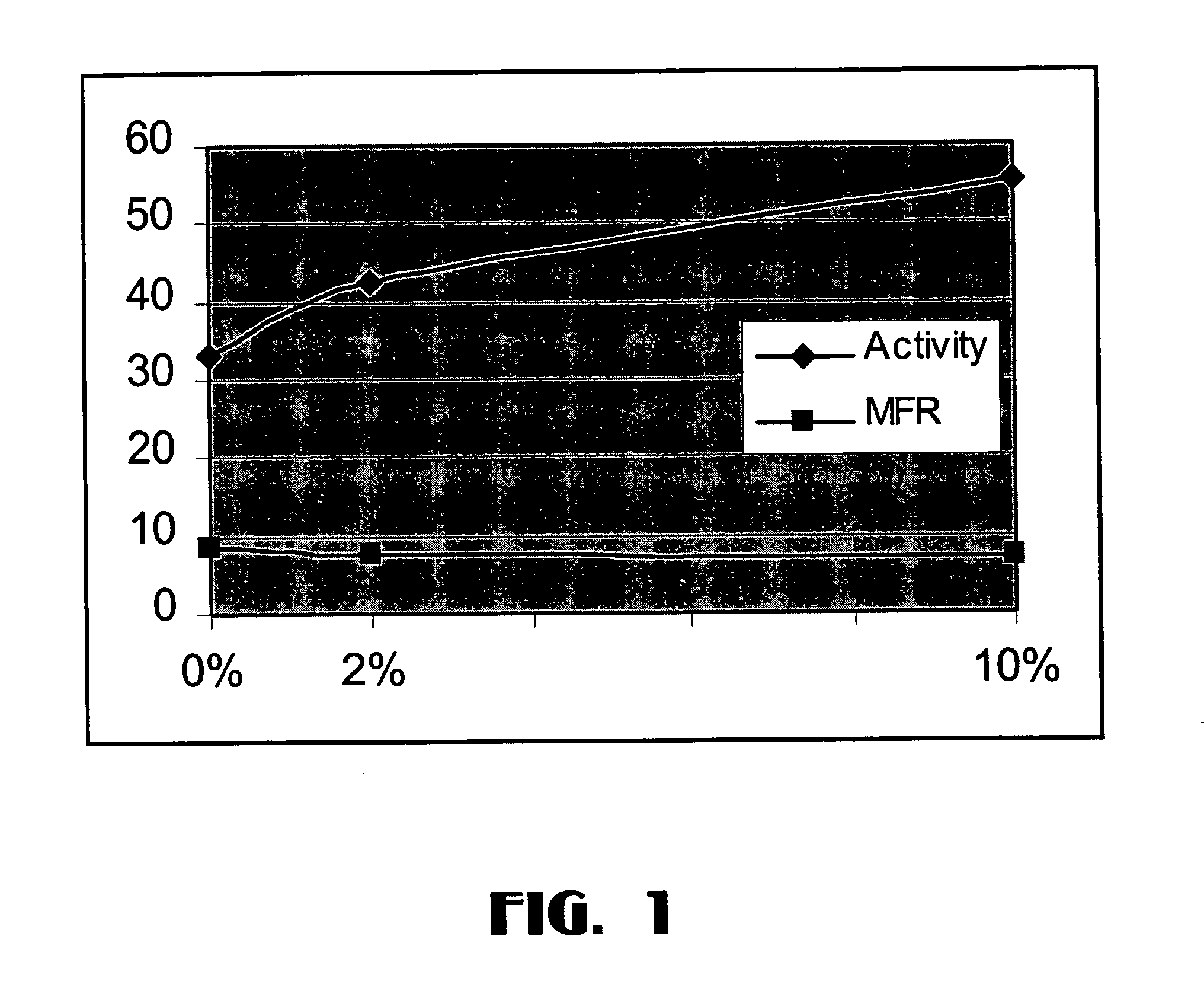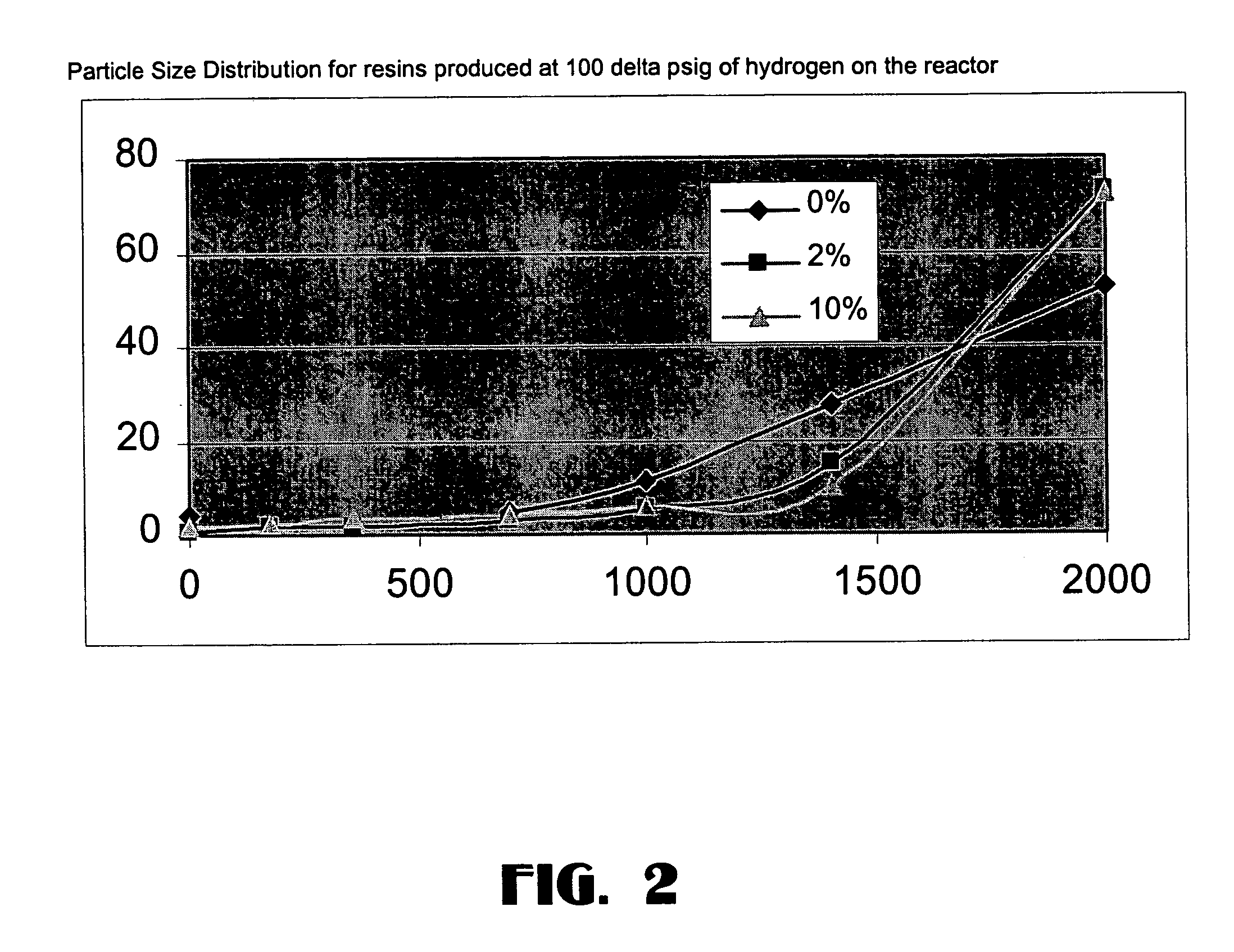Method of making a ziegler-natta catalyst
a technology of zieglernatta and catalyst, which is applied in the field of zieglernatta catalyst, can solve the problems of high catalyst residue amount, high polymer production cost, and inability to meet the requirements of the polymer processing and/or physical properties of the product, and achieves the optimization of both the shape and particle size distribution. the effect of reducing the number of zieglernatta, and reducing the production cost of the polymer
- Summary
- Abstract
- Description
- Claims
- Application Information
AI Technical Summary
Benefits of technology
Problems solved by technology
Method used
Image
Examples
example 1
[0071]This example illustrates treatment of silica with a Grinard compound of the formula RMgX.
[0072]5.0 Grams of Cab-o-Sil fumed silica were added to a 100 ml round bottom flask and then suspended in 45 ml of tetrahydrofuran (THF) under a nitrogen atmosphere. The Cab-o-Sil silica was reacted with 15 ml of 1.0M benzylmagnesiumchloride (15 mmol) in diethylether. The mixture was allowed to react at room temperature with occasional stirring for one hour. After an hour, 50 ml of heptane were added, mixed and the clear supernatant decanted. This was repeated two more times. The treated silica was then dried using a rotovap under full vacuum at 80° C. After 2 hours of drying, approximately 5.2 grams of dried material was collected.
example 2
[0073]This Example illustrates preparation of a catalyst.
[0074]The magnesium-treated silica (0.5 grams) was placed in a 500 ml round bottom flask along with 4.5 grams of anhydrous MgCl2 and 2.0 ml of 200 proof ethanol. The mixture was then slurried in 250 ml of Durasyn 174 mineral oil. The flask was heated to 110° C. using a hot oil bath at which point the solution appeared almost clear. After refluxing for an hour, the contents were transferred via heat-traced Teflon tube to chilled heptane. After settling, the clear supernatant liquid was decanted and the solid collected on a glass frit. The solid was washed 3 times with heptane and then dried for 1 hour at 60° C. using the rotovap at full vacuum. The solids contained 10% silica in MgCl2.
[0075]200 ml of TiCl4were charged to a glass-jacketed vessel and chilled to 0° C. The solid catalyst support prepared above was slowly added to the TiCl4. After addition, the vessel temperature was maintained at 0° C. for 30 minutes and then warme...
example 3
[0076]The catalyst of this Example was made in the same way as Example 2 except that 4.9 grams of anhydrous magnesium chloride (instead of 4.5 grams) were used along with 0.1 grams (instead of 0.5 grams) of magnesium-treated Cab-o-Sil silica to produce the catalyst. The resulting solid contained 2 wt % of silica in MgCl2.
PUM
| Property | Measurement | Unit |
|---|---|---|
| particle diameter | aaaaa | aaaaa |
| particle diameter diameters | aaaaa | aaaaa |
| mole ratio | aaaaa | aaaaa |
Abstract
Description
Claims
Application Information
 Login to View More
Login to View More - R&D
- Intellectual Property
- Life Sciences
- Materials
- Tech Scout
- Unparalleled Data Quality
- Higher Quality Content
- 60% Fewer Hallucinations
Browse by: Latest US Patents, China's latest patents, Technical Efficacy Thesaurus, Application Domain, Technology Topic, Popular Technical Reports.
© 2025 PatSnap. All rights reserved.Legal|Privacy policy|Modern Slavery Act Transparency Statement|Sitemap|About US| Contact US: help@patsnap.com



